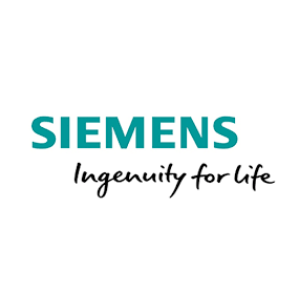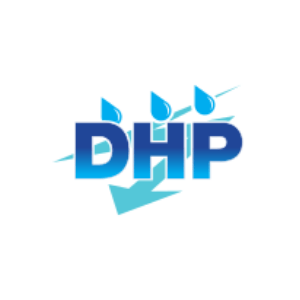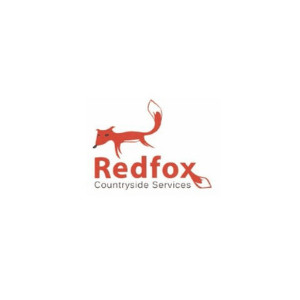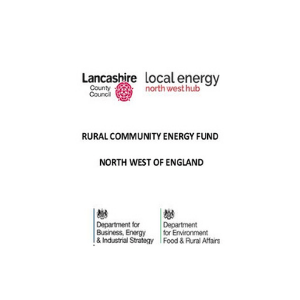FAQ’s
Do you have any questions?
Here are answers to some pretty common questions we get asked about ourselves and the Congleton Hydro Scheme. Should you have other questions please get in touch via our contact page. We will be happy to help!
What is a hydroelectricity project?
The energy from moving water in a river is used to generate electricity. In the past, many factories used water-wheels to extract energy from rivers to drive rotating machines such as grinding stones, textile machines, etc. To create more energy, weirs were constructed. This project uses the water to force an Archimedes screw coupled to an electrical generator to rotate. The generator converts the rotational energy into electricity.
What is a Community Benefit Society (CBS)?
A Community Benefit Society is an organisation governed by a set of rules overseen by the Financial Conduct Authority. The Rules ensure that any surplus funds are used for community benefit and that all shareholders have equal voting rights. It also protects shareholders from any liabilities in excess of their shareholding. A copy of the Society’s rules is available to view or download from the Home Page.
When was planning permission granted?
Planning permission was obtained on 15th March 2019. The planning application reference number at Cheshire East Council is 18/5811M. A request for variation to planning conditions to allow limited tree clearance work to commence before the bird nesting season is expected to be approved by 12th Feb 2020 (planning reference 19/5809M). These planning applications can be viewed at http://planning.cheshireeast.gov.uk/.
How is Congleton Hydro funded?
The money is being raised by investors from the community. A share offering was launched allowing investors to purchase shares up to the value of £70,000. Their capital investment will be gradually repaid and an average interest rate on retained capital of ~4% will be paid annually over a 25 year period. The target was exceeded raising in excess £730,000 to allow construction and commissioning of the system.
What are the benefits of investing?
By investing you would
- Enable carbon-free generation of an estimated 260,000kWh of electricity per year
- Provide approximately £100,000 for local community projects & organisations over 20 years
- Increase awareness of environmental issues by the provision of an accessible educational resource for local schools and colleges
- Help to maintain Congleton’s industrial heritage
When will the turbine start generating?
Generation is expected to commence in early 2021.
What happens in a flood or a drought?
If the water level gets too high, there is insufficient head to allow the screw to generate power, so it is shut down. The equipment housing will be above the 100-year flood level record, and all the structures have been designed to withstand flood conditions. Therefore, after a clearing up operation by volunteers, the generation should be able to recommence once the flood has subsided.
Under drought conditions there will be insufficient flow to operate the generator and no revenue will be generated. However, by installing variable speed control to the screw we will be able to generate some power for approximately 90% of the year.
How much electricity will it generate?
The amount of electricity generated will be dependent on rainfall. Based on historical average figures from the Environment Agency it is forecast that the system will generate 260,000kWh annually. This is equivalent to the annual electricity consumption of about 60 typical homes. However, if it had been operating over the past 4 years which have been considerably wetter than average this figure would have been exceeded.
How will we protect wildlife?
Numerous wildlife studies have been performed as part of the planning approval process (see here for the full environmental report). These studies concluded that there will be minimal impact on wildlife, especially after the construction phase has been completed. All tree work has to be completed outside the bird nesting season (March – August). On completion, the woodland site will be managed to ensure that it is well maintained to provide a habitat for wildlife. The boardwalk is planned to include a viewing platform with information about the species which inhabit the area.
Who else is involved in the project?
Industrial partners involved with the project include Siemens plc, and HMK Ltd, both of which have made donations of equipment or provided other support. Additionally, Eaton Bank Academy has been involved with projects related to the scheme and hosted the initial launch event. Congleton Town Council has provided support at events and two town councillors are on the committee. Congleton Sustainability Group has provided meeting rooms and Congleton Partnership has provided access at public events.
Is it going to be noisy?
The background noise from the weir itself is considerable and is expected to drown out any noise generated by the equipment. A detailed noise study has been conducted and can be viewed here.
Why local energy?
Generating green energy locally encourages local people to take responsibility for being environmentally responsible and provides an educational resource to ensure that this philosophy is adopted by future generations.
Can I invest for somebody else (e.g. children)?
Shares can only be registered in the name of someone over the age of 16. However, when registering it is possible to express a wish that they are transferred to a nominated person when they reach their 16th birthday. The new owner will be contacted shortly before their birthday to ensure they agree to own the shares.
Registering this wish can be done by email to sharenergyadmin@sharenergy.coop or by filling in the appropriate section of the application form on page 24 of the Share Offer Document.
Sharenergy will contact all shareholders every year before a payment is due to ask them to confirm the account to which they want the payment to be made (this is not specified during the initial registration process). If you wish payments to be made to another beneficiary (e.g. an adult relative or a charity) this can be arranged by specifying their account details when a payment is about to be made. The receiver of payments can be changed annually if desired.
How did Congleton Hydro start?
A group of enthusiasts for sustainability projects initially wanted to generate electricity from the weir in Congleton Park. However, this proved economically problematic as the “head” of water is less on this weir than on the 4m high weir at Havannah. About four years ago this group were joined by other enthusiasts who started to develop a detailed project proposal for Havannah Weir.
Has this been tried before elsewhere?
There are currently approximately 50 similar schemes operating successfully on rivers up and down the country. See www.microhydroassociation.org for more information. Here is an example of a similar scheme to Congleton Hydro at Whalley in Lancashire.
Who runs DVCE and Congleton Hydro?
DVCE (Dane Valley Community Energy) is run by a group of professional volunteers who have been working together to develop the scheme for nearly 4 years. We currently have 14 active committee members, 6 of whom are Directors.
How can people invest in the project?
Congleton Hydro Share offer is now closed and we aren’t currently taking any more investments.
We may do more projects in the future, please contact us if you would be interested in investing in future projects.
What are the potential risks of investing?
DVCE and the Congleton Hydro project is run by volunteers as a Community Benefit Society. Like any business, it depends on its revenues being greater than its operating costs. Whilst every care has been taken in ensuring that the project has a robust business plan with comfortable levels of contingency, there remains the possibility that unforeseen circumstances could make the business lose money over a sustained period, which could result in it being wound up. In this situation it is possible that some or all of the outstanding capital that had been invested in shares by an individual or organisation would be lost.
How long will the hydro scheme last?
The civil structures and the Archimedes screw itself will last more than 40 years. The generator and gearbox are expected to last for more than 25 years. The electronic equipment has an expected life of 20 years. The bearings for the Archimedes screw are expected to need replacement every 10 years.
Who has designed the hydro scheme?
The system has been designed by Derwent Hydro Developments Ltd. This company has designed 11 similar systems around the UK, some of which it also operates.
Will the project change how the weir looks?
The installation is on the western side of the weir, approximately 20m away from existing structures, and is well screened by mature trees. Therefore, the view from Havannah Bridge will not be significantly affected.
Why's hydro a good way to generate electricity?
The hydroelectric generation does not produce any CO2 emissions or consume any natural resources. As such it has a negligible negative impact on the environment and is fully sustainable.
How will we involve everyone in Congleton?
The Directors of DVCE want as much community involvement as possible. It is planned that presentations will be made at events run by local societies to ensure all local people are informed about opportunities for hands-on involvement. Congleton Town Council is planning a series of Congleton Green Fayres, which DVCE will participate in.
Volunteers will be needed to regularly check on the condition of the system, and especially to help clear any build-up of debris at the inlet grilles.
Is it going to harm fish or newts?
The Environment Agency (EA) has studied the impact of Archimedes Screws on fish. It has concluded that fish can safely swim down a screw as long as the maximum speed of rotation is less than 30RPM. There is no evidence that there will be any impact on newts. Additionally, we are still in negotiations with the EA regarding including a fish pass in parallel with the screw, which would allow fish to migrate up-river, which has not been possible for the past 250 years!
Where can I find DVCE’s accounts and society rules?
Is DVCE registered with the FCA?
The “Co-operative and Community Benefit Societies Act 2014” specifies that a community benefit society must be registered with the Financial Conduct Authority (FCA).
To achieve registration the FCA must be satisfied “that the business of the Society is being, or is intended to be, conducted for the benefit of the community”, that the Society has at least three members and has a registered address in Great Britain or the Channel Islands. Dane Valley Community Energy Ltd is registered with the FCA (Registration No 7142). The FCA maintains a website listing all registered Societies at www.mutuals.fca.org.uk.
As the Town Mayor of Congleton, I am delighted to see this long-awaited project starting to become a reality. Not only will it redirect renewable energy back into the community, but it will be an educational tool for future generations to see how we can harness what is already available to us and transform it into clean energy.
Our Partners & Sponsors













Get In Touch
Dane Valley Community Energy Ltd is a Community Benefit Society registered with the Financial Conduct Authority (FCA - Registration Number 7142) as defined by the Cooperatives and Community Benefit Societies Act, 2014 and governed by rules which can be viewed HERE.
